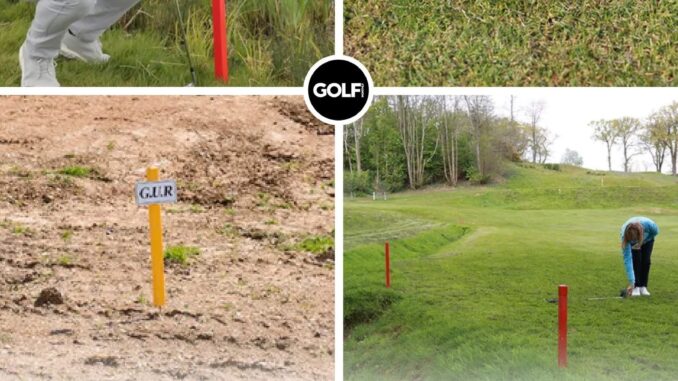
Golf is a game of skill, patience, and let’s be honest a sometimes overwhelming number of rules. Even seasoned players occasionally forget some of the lesser-known regulations. To help clear the air, our qualified golf rules expert breaks down six often overlooked rules that every golfer should know to avoid unnecessary penalties or confusion during play.
1. Relief from Red Penalty Areas Isn’t Always Lateral
Many golfers assume that once their ball enters a red penalty area, lateral relief is the only option. That’s not always the case. You actually have three options:
- Play the ball as it lies.
- Take stroke-and-distance relief (replay from where you last hit).
- Take lateral relief, keeping the point where the ball last crossed the edge of the penalty area between you and the hole.
Expert Tip: You must identify the correct reference point where the ball last crossed into the hazard. Guessing could lead to an illegal drop.
2. Embedded Ball Rule Applies Beyond the Fairway (Sometimes)
Many players believe relief for an embedded ball only applies in the fairway. However, according to the Rules of Golf, relief is also available in the general area (i.e., anywhere on the course except in bunkers and penalty areas), as long as the course hasn’t declared otherwise in a local rule.
Expert Tip: Check the local rules posted before your round—some clubs limit embedded ball relief to closely mown areas.
3. You Can Remove Loose Impediments in a Bunker
Yes, really. Since 2019, you’re allowed to remove loose impediments (like stones, leaves, or twigs) from bunkers without penalty. However, if you cause your ball to move in the process, you’ll incur a one-stroke penalty (Rule 15.1b).
Expert Tip: Move the impediment gently. If you disturb the sand and improve your lie or grounding area, that’s a separate penalty.
4. Free Relief from Abnormal Ground Conditions Includes Temporary Water
Abnormal ground conditions—like temporary water, ground under repair (GUR), or animal holes—entitle you to free relief. If water is visible under your feet or the ball when you take your stance, it qualifies as temporary water.
Expert Tip: You must take full relief—your stance, lie, and intended swing must all be completely outside the abnormal area. No partial relief allowed.
5. Touching the Sand in a Bunker Before a Shot Can Be Legal
Contrary to popular belief, you can touch the sand in a bunker outside the area of your intended swing without penalty. What remains illegal is grounding the club right behind the ball before playing it.
Expert Tip: Practice swings in the bunker are allowed as long as you’re not testing the condition of the sand near the ball.
6. You’re Not Always Entitled to Relief from a Tree Root
It’s a common frustration: your ball comes to rest near an exposed tree root, and you assume you’re entitled to relief. But if the root isn’t part of abnormal ground conditions (like GUR), you must play it as it lies—or take unplayable ball relief with a one-stroke penalty.
Expert Tip: Don’t confuse discomfort with abnormality. Painful lies are part of the game—unless declared otherwise by local rules or course markings.
Final Thoughts
Golf’s rulebook can be dense, but staying informed helps you avoid unintentional mistakes and ensures fair play. These six overlooked rules often come into play during casual rounds and competitions alike. If you’re ever unsure, consult your local rules sheet—or better yet, keep a digital copy of the USGA or R&A rules app on hand.
Leave a Reply